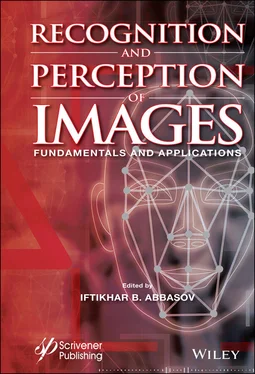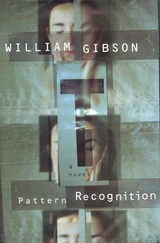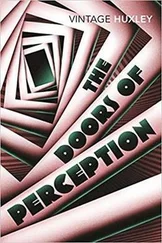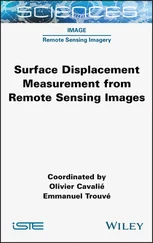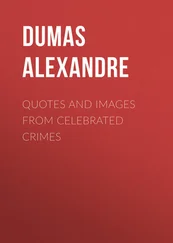
Figure 1.3.8 Grouping on the principle of the same type of communication.
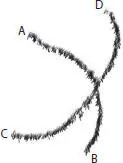
Figure 1.3.9 Grouping factor “good continuation”.
Factor “common fate”.According to the “common fate” factor, elements moving in one direction are perceptually combined into one group. Such grouping occurs on the basis of identity, but this principle can be applied to moving elements. For example, a flock of migratory birds in the form of a “wedge” are perceived as a group ( Figure 1.3.10). This factor can also be attributed, “fascinating dance” – the synchronous movement of fish schools in the ocean or “waves” created by the movements of the hands of fans during a football match.
Symmetry factor.In accordance with the factor of symmetry, when perception, more natural, balanced, symmetrical figures become priorities [Prokopenko et al., 2006]. In Figure 1.3.11, a black central column is predominantly observed, and the profile outlines can also be recognized on a white background (profile of Julius Caesar).
Closure factor.When grouping elements according to the closure factor, preference is given to the variant that favors the perception of a more closed or completed figure ( Figure 1.3.12, from above). Figure 1.3.12, on the left, presents an example of a gestalt grouping of elements – the constellation Ursa Major; it is formed on the basis of the factors of “good continuation” and closure. Although in reality the stars in the constellation Ursa Major are not related to each other, they are a random result of their perception from the Earth in this perspective. In Figure 1.3.12, on the right, one can recognize the figure of the jockey athlete during the jump [Abbasov, 2016].

Figure 1.3.10 “Wedge” migratory birds, the factor of “common destiny”.
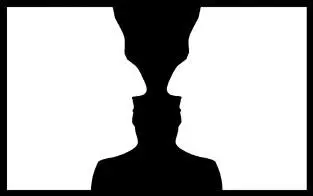
Figure 1.3.11 Grouping by symmetry factor.
We can give one more example of the interaction of the factors “good continuation” and closure when grouping elements. On Figure 1.3.13on the left we see a random set of fragments of indefinite form. However, if these fragments are superimposed with the contours of the silhouettes of cats ( Figure 1.3.13, right), then you can see the cat figures in the background of several dogs. It should be noted that the process of our perception is based not only on the definition of spatial connections between the figures, but also on the results of previous perceptions of similar forms acquired by us.
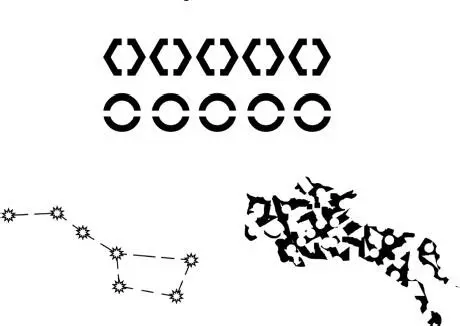
Figure 1.3.12 Grouping factor closure.

Figure 1.3.13 “Cats and dogs”, the factors of “good continuation” and closure.
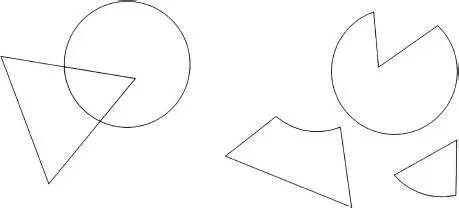
Figure 1.3.14 Triangle and circle configuration.
Law of pregnancyor the law of good form – by this is meant the preferential perception of the simplest, most stable form of all possible, on the basis of various factors of grouping. For example, identifying a closed figure is easier than opening. Presented in Figure 1.3.14, on the left, we perceive the configuration as a superimposed figure of a triangle and a circle. However, it can be perceived in a different way, as a combination of three different figures.
1.3.3 Subjective Contours
Sometimes the desire of our visual system to achieve closure can occur in a free area of the field of view; this leads to the appearance of boundaries or contours, which are called illusory or subjective. Examples of subjective contours are presented in Figure 1.3.15[Abbasov, 2019].
Pay attention to the fact that in some cases not only the outlines are visible, but also the figures completely. According to the Gestalt explanation, the difference in lightness of form and background leads to the fact that the figure appears lighter or more intense than the background.
Figure 1.3.16presents the Necker cube with subjective circuits as an example of the cognitive approach [Abbasov, 2019]. When viewing a drawing, it is perceived as a three-dimensional figure in the form of a cube, behind the vertices of which there are dark circles with a texture. Although the entire cube is visible, the lines appearing as edges are illusory.
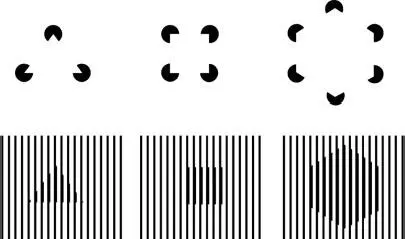
Figure 1.3.15 Subjective contours.
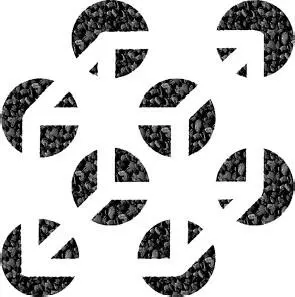
Figure 1.3.16 Necker’s subjective cube.
Our visual system, when perceived, also takes into account mutual overlap to determine the position of the figure. The main role in the formation of subjective contours is played by the perception of the central figure, which partially obscures or blocks the surrounding elements. The more pronounced the apparent overlap with the central figure (the silhouette of the palm and the girl), the faster the subjective contours appear ( Figure 1.3.17).
If the elements that cause the appearance of the contour are themselves identified as closed, independent figures, the effect of the subjective contour appears weaker. In this case, the finished shape of the overlapping elements causes an alternating perception of the central figure and the overlapping elements ( Figure 1.3.18).
The apparent overlap helps us to perceive subjective figures also on the basis of three-dimensional forms. With the help of gestalt cognitive perception, the flat pictures presented in Figure 1.3.19acquire volume, create the illusion of composite three-dimensional forms [Abbasov, 2019].
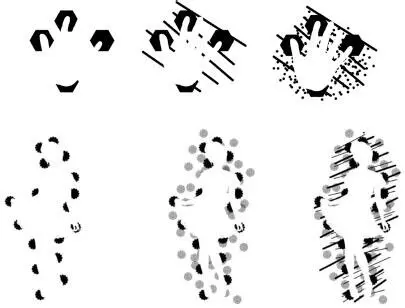
Figure 1.3.17 Strengthening the subjective contour overlapping elements.
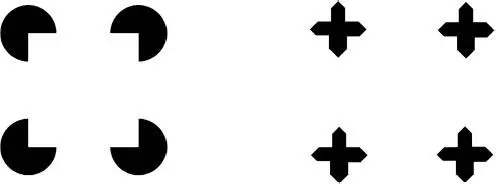
Figure 1.3.18 The weakening of the subjective central rectangular contour.
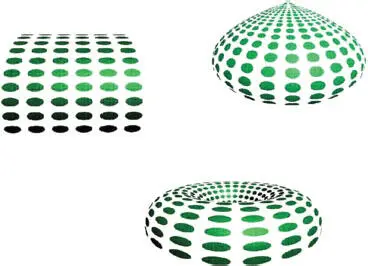
Figure 1.3.19 Three-dimensional subjective contours.
Читать дальше
